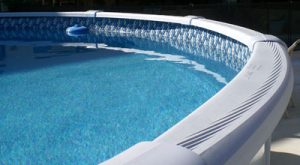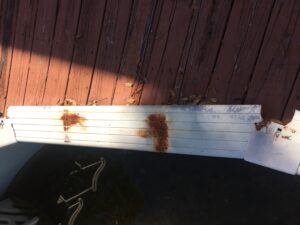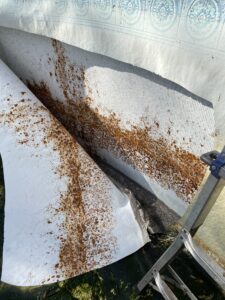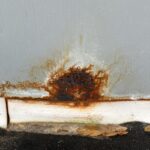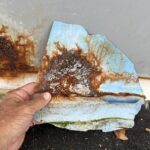The swimming pool industry has a saying “There are two kinds of pools – Those that are leaking, and those that are going to leak”. If your above-ground pool is losing water, don’t be too alarmed. It was going to happen, eventually.
ABOVE-GROUND POOL LEAKS ARE EASY WHEN YOU SEE THEM. MOST THOUGH, YOU CAN’T SEE
Thinking that you might have a leak in your above-ground pool is the first step on this stress road. Some will stay in this stage for a good while just adding some water when it needs it. Eventually, the pool loses water at a greater rate and it’s time to face the music. It’s now time to discover why the pool is losing water.
Most that will find this article useful at somewhere in between the “I think I might have a leak” stage and the “It’s time to figure out why the pool is leaking” stage.
If your water-losing pool is in Orlando or Central Florida, this will help just a bit more.
16 COMMON CAUSES AN ABOVE-GROUND SWIMMING POOL LOSES WATER (THAT YOU MAY NOT BE AWARE OF)
1 Evaporation
Every pool owner going down the stress road of water loss will start early by learning a little about evaporation.
Evaporation is the first and best dream that your pool may not really have a leak. The pool’s water level is constantly dropping by this naturally occurring condition when dry air pulls moisture from anywhere it can to hold some water.
The rate of evaporation (how much water gets sucked out of your pool by the air over a 24-hour period) is important to know, so here are a couple of clues:
A In Orlando, I have personally seen as much as one-quarter inch of water loss per 24 hours. That would mean a pool’s water level can drop almost two inches over the span of a week. (7 days x 1/4” = 1 3/4” loss per week)
This is the most I’ve ever seen in the most extreme evaporation conditions in Orlando
B The rate of evaporation is highest when the air is driest. This means in Central Florida, your pool will lose more water from evaporation during the fall and spring months AND NOT IN THE SUMMER MONTHS.
C In the fall, when the Orlando summer rains stop and the air gets dry, this is when people think their pool has a leak.
2 The pool liner gets old and brittle
Above-ground pool liners don’t hold water perfectly and then one day just die. They are like us. They get brittle as they get old. And when they are just brittle enough, then they begin to get pinholes or micro-cracks in them.
This can be a commonly unseen reason the pool is losing water. And due to above-ground pool liners having ridiculously long (and unrealistic) manufacturer’s warranties, many don’t consider their liner is now old after five years.
Finding this type of liner leak is very difficult, but that’s not the bad news. The real bad news is if you are diligent and lucky enough to find one pinhole and patch it, there will be more on the way.
Yep. Time for a new liner.
3 Plastic equipment hoses fail and get pinholes
If your above-ground pool has the two six-foot plastic flex hoses that came with it and are connecting the pump and filter to the pool (skimmer and return), they can get pinholes in them.
These plastic connector hoses are usually the weakest link of your above-ground pool. And as they get old and brittle, they can get pinholes too. These pinholes can sometimes easily go unnoticed and leak water out of your pool.
Often, when these cheap hoses fail, they split open and water goes everywhere. What I’m saying here is they can sometimes fail with little pinholes streaming water that you don’t really see or notice.
4 Cartridge filter lid leaking
Cartridge-type filters are the overall best to have for your above-ground pool (especially in Orlando), but some will have lids that leak in a very sneaky way.
Since filter lids are regularly removed, they can lose their seal and leak sometimes without you noticing.
5 Sand-type filter’s multi-port valve failing
A sand filter’s top valve can commonly leak after a few years. And some of them can go unnoticed as they can leak out of the backwash/waste opening when some have them plumbed or hoses attached to them.
Always check the end of your backwash/discharge line for moisture just in case the valve has a small leak.
6 Pool pump shaft seal leaking
Every above-ground pool pump has a seal between its electric motor and the pump. This seal can fail and leak water from under the pump straight down and into the ground without showing much if any moisture around the pump area.
Getting down on hands and knees can sometimes be the only way to see this leak.
7 Skimmer box leaking
The skimmer in an above-ground pool is maybe the most common place there can be a leak. Sometimes the leak is hard to see because it is streaming down the pool wall and the water is blending in with the wall’s texture.
Getting your head under the skimmer and wiping around where the skimmer meets the wall will show you if it’s leaking from there.
8 Return fitting leaking
Although not as common, the return fitting attached to the pool wall can have a leak streaming seamlessly down the pool wall and going unnoticed.
With the pump on, wipe the return fitting dry where it meets the wall to make sure there is no leak.
9 Kids with sharp things in the pool
Sharp things can cut or puncture above-ground pool liners. Sometimes the cut is so small and subtle that you never see it. And with kids playing with things that shouldn’t be in the pool, this can cause more than one micro-hole.
Oh, and kids not following pool rules come in all ages. NOTE: If your kids are little angels that never do anything wrong, then just blame their friends that come over to swim.
10 Trauma/damage to the outside of the pool wall
The most common example of this is a lawnmower shooting a rock from under it and hitting the pool wall, but there are many other happenings in backyards that can cause holes in pool walls from the outside.
These holes are often made without anyone knowing and they can be hidden from view on the backside of the pool (where no one ever goes) or under an elevated pool deck.
11 Doggie-paddling
If you let dogs swim in your above-ground pool (and why not), then consider that may damage the pool liner if paddling too close to the pool wall.
Tears from dog paws can be extremely difficult to see even though they are close to the pool’s surface. If your pool is losing water then stops losing water at a certain high point AND you let dogs swim, then consider some high up liner tears.
12 Wild animal got in the pool
No. I don’t mean your Uncle Charlie with the slight drinking problem.
What I mean here is a raccoon or squirrel or something got in the pool while no one was around, and then clawed its way out before anyone noticed.
Those wild animal claws can do a number on an above-ground pool liner at the pool surface. And sometimes you won’t notice it.
13 Nutgrass
Nutgrass is a special grass that be in your yard when the pool was installed. It can then wait a while, then decide to grow up right through the pool’s liner.
And until the blade grows a bit, you may not notice the hole it made at the bottom of your pool. Nutgrass can be in any yard in Orlando, but areas like Deltona and Kissimmee can have it the most. Learn about nutgrass here.
14 Horned-nose beetles
Although pretty rare in the last 20 years, these beetles with super sharp horns can crawl under a pool liner and then get trapped with their horns against the liner and make little holes in the vinyl.
Orlando and Central Florida have horned-nose beetles, so consider that as a possible reason your pool has a leak. Just don’t consider it much as it is fairly rare.
15 Rocks under the liner (Rarely a leak cause)
OK, so rocks and other sharp-feeling things very rarely cause holes in above-ground pool liners, BUT OH BOY DO THEY GET BLAMED FOR IT
Think of trying to stick a needle through a rubber band. The rubber band wraps and stretches around the needle quite a bit before it goes through.
This is the case with pool liners as they can stretch around things more than you think.
16 Roots growing under liner
Above-ground pool liners transfer some moisture (like a soda can) into the ground. Because of this, things that live and need moisture can grow to the liner.
It is super common for roots to grow under pool liners. Most do without anyone noticing, but some continue to grow and the swimmer can eventually feel it under the pool.
Growing roots rarely make holes in pool liners UNLESS the liner is getting old and brittle. Where these roots meet the liner can be an excellent point for the old liner starting to fail and make little leaking cracks.
So this really wouldn’t be the fault of the growing root as it would be the fault of the aging liner.
